By Dan Weisz
I’ve been visiting a pair of Great Horned Owls that I learned were “nesting” in a palm tree. For Great Horned Owls, “nesting” is a loose term. These birds don’t build nests. They may “borrow” a pre-owned nest of a Raven or a raptor such as a Red-tailed Hawk, a Harris’s Hawk, or a Cooper’s Hawk. Since the owls’ breeding season is much earlier than those other birds, the nests are vacant at the time. But Great Horned Owls may also just choose to find a suitable surface somewhere, be it a tree hollow, a ledge on a cliff face, a pot on the top shelf of a Home Depot, a flat roof, or the ‘balcony’ of a palm tree.
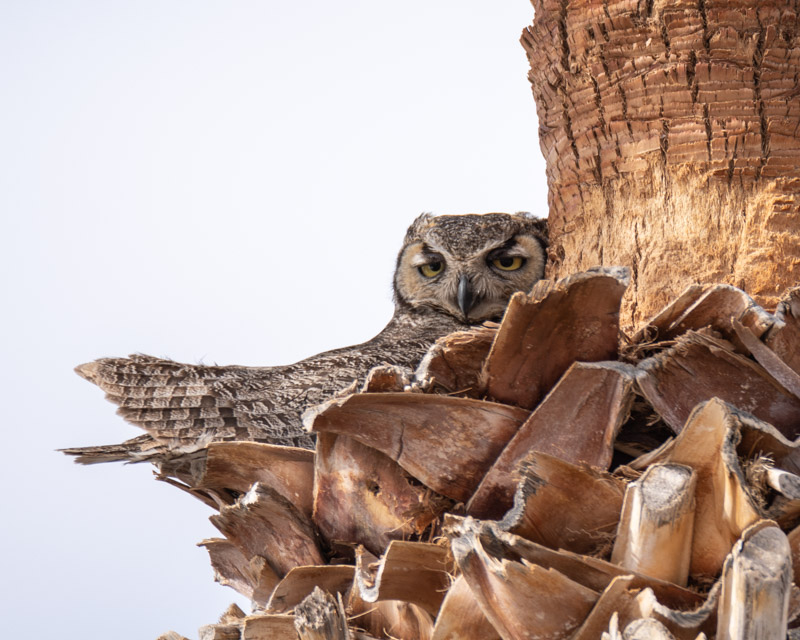
The first few weeks I observed this owl she was always sitting on the north side of the tree. This time, she was on the east side making me believe that she has moved due to the fact that the eggs had hatched and she had owlets. In the photo below, you can see a little round mound of lighter colored fuzz to the bottom left of the owl. I think that’s one of her babies!
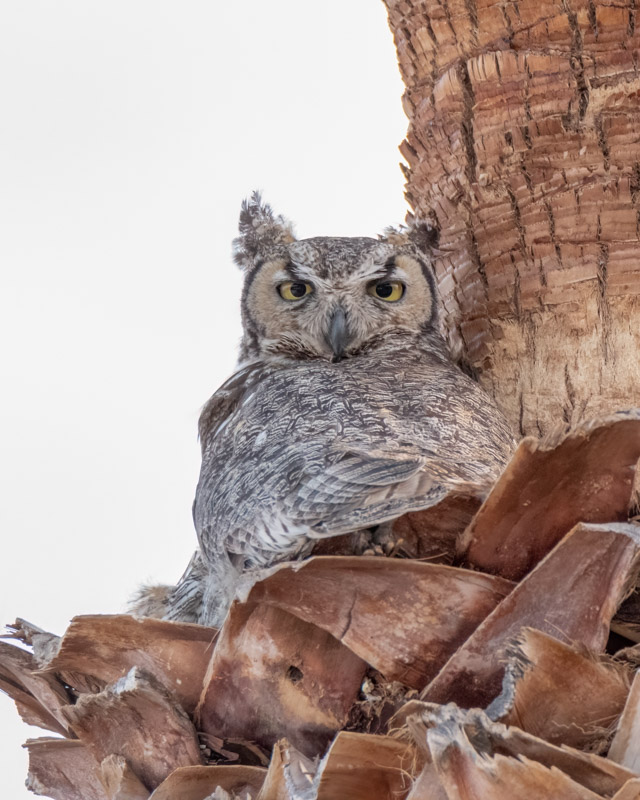
Dad was sleeping across the street in another palm tree. He heard my footsteps and woke up to see what or who was walking around beneath him.
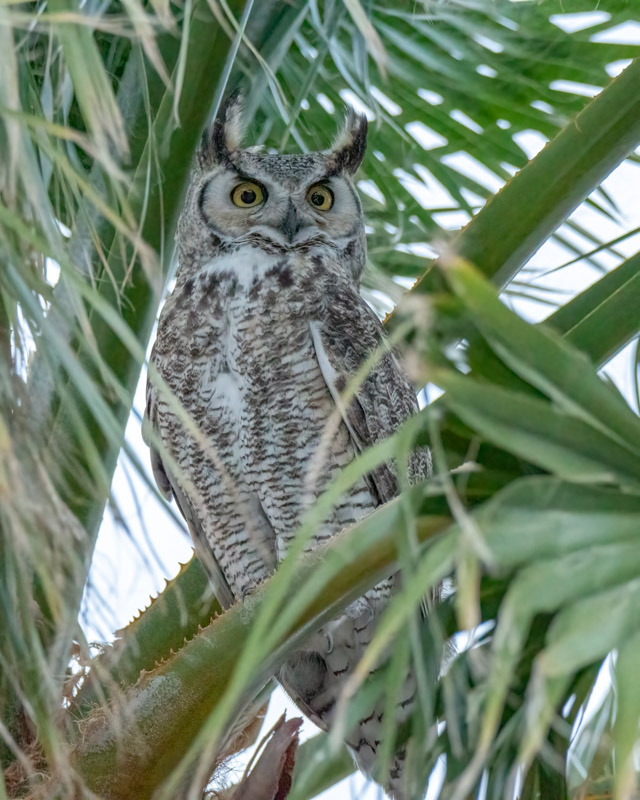
Just before sunset the male Great Horned Owl hopped up to another branch and looked directly at his mate sitting with the owlets across the street. Without saying a word (or giving a hoot), he soon flew off towards the east, behind the houses on the street, and disappeared. He was off for the evening’s hunt. Despite the clarity of these photos, by now it was already after sunset.
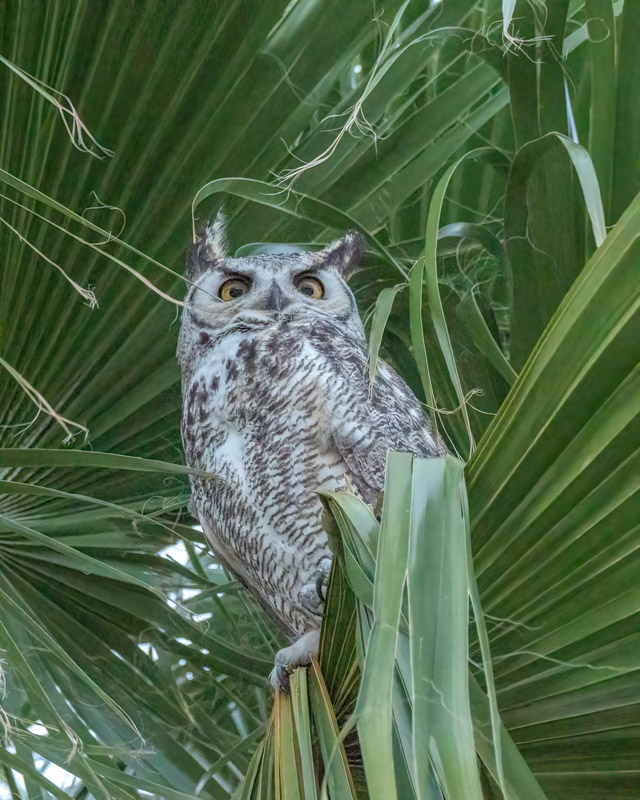
My friends and I stood around talking, and then we realized we might be able to see the owl from the backyard of the house we were visiting. We walked to the back and, after a minute, spotted the owl on the arm of a Saguaro Cactus. The owl was looking around ready to begin the night’s hunt but he did pause to acknowledge our presence.
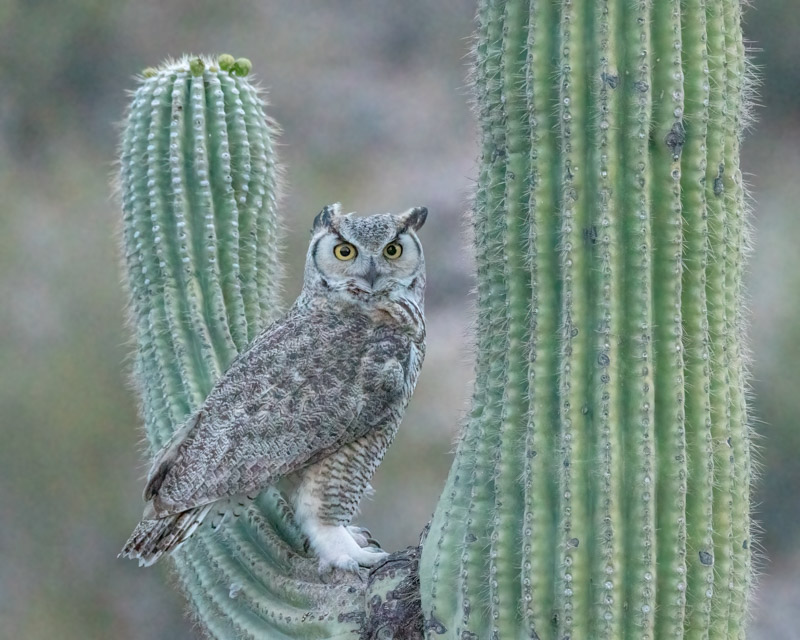
Despite the fact that it was after sunset on a cloudy day and well into dusk, modern camera and processing technology allows the possibility of taking photos successfully in dim light. I was able to watch the Great Horned Owl as it grew darker and darker.
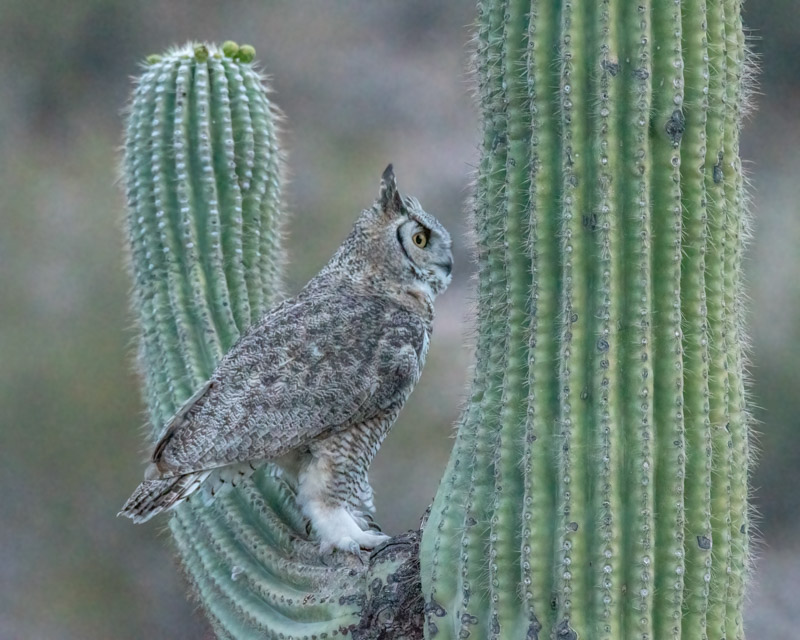
The wind blew the owl’s plumicorns, or ear tufts. You can see the horizontal striping that runs across the bird’s front all the way down to his legs. And Great Horned Owls have heavily feathered, white feet. Those feathers may serve a few purposes. They may help to muffle any sound the wind might make across the owl’s feet while it flies. It may help to keep the bird warm during cool night hunts. But it also may serve as a glove when the owl hunts. When it captures prey, prey may fight back in a struggle for its life. Those feathered feet may protect the owl from bites and scratches until the prey is subdued.
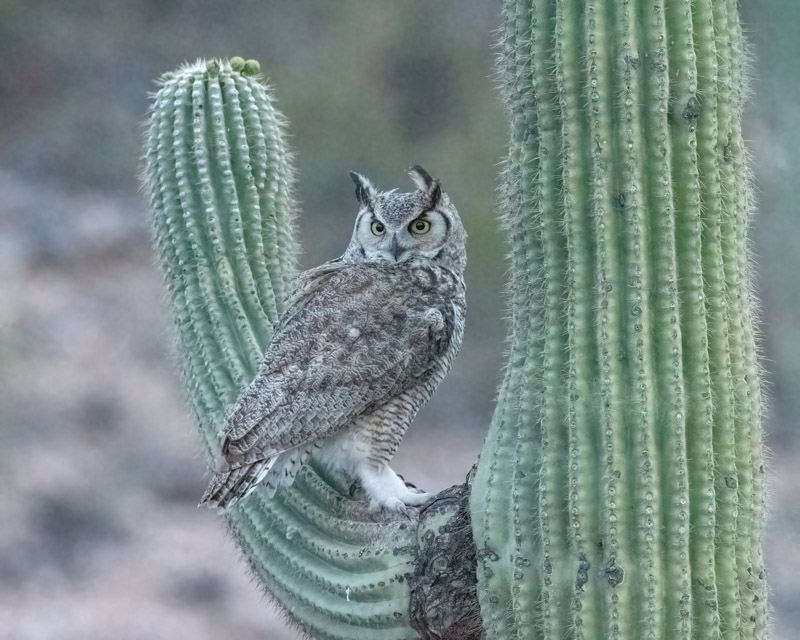
The Great Horned Owl gave all of his feathers a shaking out…..
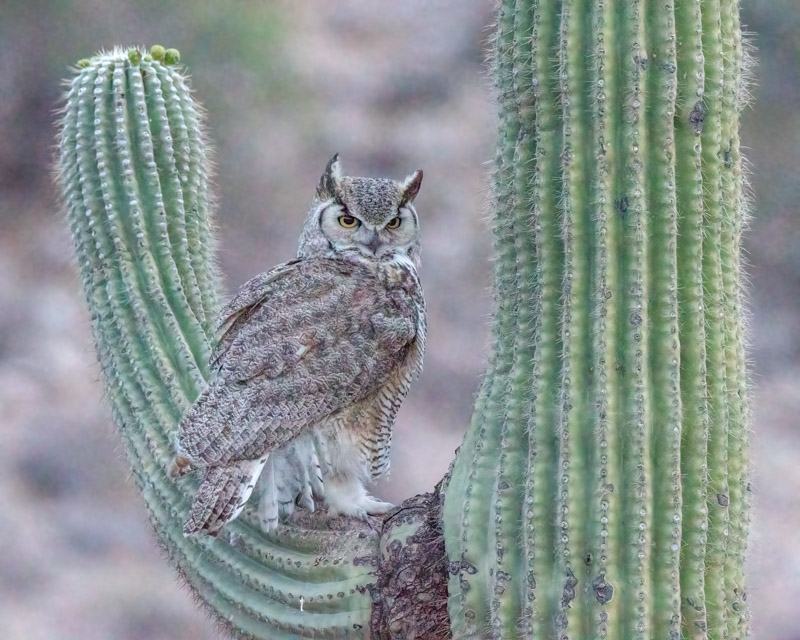
Then the owl stood alertly, gave one last look towards his family on the palm tree, and quickly took off into the desert. The night’s hunt was on!
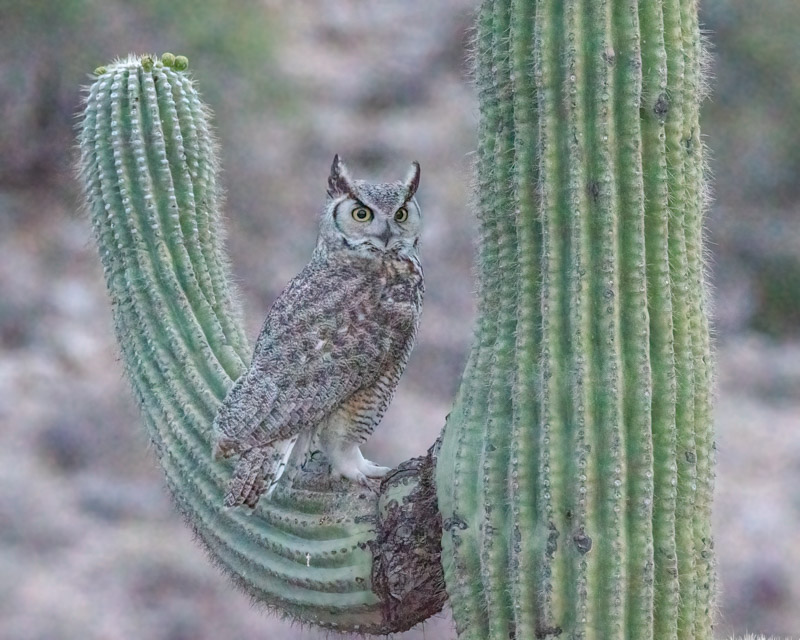
I returned to this site over the next few weeks hoping to see both owls and to watch their two youngsters grow up. Look for the next episodes in this saga!
